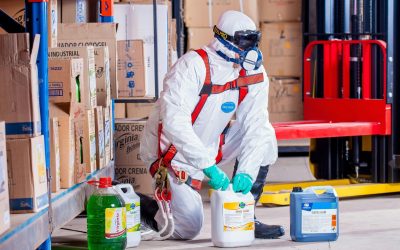The Hidden Threat of Toxic Exposure Risk: Why Communities Can’t Wait for Action
Every night, as millions of Americans sleep peacefully in their homes, a silent threat continues to build in communities across the nation. Toxic exposure risk from industrial facilities doesn’t follow a 9-to-5 schedule—chemical emissions continue around the clock, accumulating in our air, soil, and water while families, workers, and even our elected officials rest.
The scope of this crisis is staggering. Millions of people are unknowingly exposed to harmful toxins that build up in their communities over time, creating long-term health risks that often go undetected until it’s too late.
Understanding Toxic Exposure Risk in Our Communities
Toxic exposure risk encompasses the daily reality faced by communities living near industrial facilities, chemical plants, and manufacturing sites. These operations release a cocktail of harmful substances into the environment through:
- Atmospheric emissions that disperse throughout neighborhoods
- Groundwater contamination affecting drinking water supplies
- Soil pollution that impacts local food systems
- Air quality degradation causing respiratory issues
The most insidious aspect of toxic exposure risk is its cumulative nature. Small amounts of chemicals released consistently over time can build up to dangerous levels, affecting entire communities without immediate obvious symptoms.
The Nighttime Emission Crisis
One of the most concerning aspects of industrial pollution is that many facilities continue releasing chemicals during overnight hours when oversight is minimal. This practice means that:
- Employees working night shifts face elevated exposure levels
- Surrounding communities experience concentrated pollution while sleeping
- Children in nearby schools and daycare centers are particularly vulnerable
- Politicians and community leaders may be unaware of the extent of nighttime emissions
These nocturnal releases contribute significantly to the overall toxic burden that communities carry, often without their knowledge or consent.
The Clean Recovery Act: Demanding Real Solutions
While many organizations focus on fundraising and awareness campaigns, The Clean Recovery Act takes a fundamentally different approach. They’re not asking for donations—they’re demanding immediate, concrete action from polluters.
Direct Action, Not Charity
The Clean Recovery Act recognizes that toxic exposure risk requires urgent intervention, not lengthy fundraising cycles. Their mission centers on compelling polluters to take direct responsibility through:
Mandatory Bioremediation Implementation: Requiring facilities to install biological treatment systems that use natural processes to break down harmful chemicals before they’re released into the environment.
Advanced Technology Installation: Demanding the implementation of cutting-edge remediation technology that can capture and neutralize chemical emissions, particularly during nighttime operations when monitoring is often reduced.
Real-Time Emission Reduction: Focusing on technologies that immediately reduce the chemical releases that contribute to community toxic exposure risk.
Why This Approach Matters
Traditional environmental advocacy often focuses on policy changes that can take years to implement. The Clean Recovery Act understands that communities facing toxic exposure risk can’t wait for bureaucratic processes to unfold. Their direct action approach means:
- Immediate pressure on polluting facilities to install remediation systems
- Focus on proven technologies that can be implemented quickly
- Emphasis on protecting vulnerable populations, especially children and workers
- Recognition that environmental justice requires urgent action, not just good intentions
The Technology Solutions Available Now
The remediation technologies that The Clean Recovery Act advocates for aren’t theoretical—they exist and are being successfully implemented in various locations:
Bioremediation Systems use naturally occurring microorganisms to break down pollutants. These systems can be installed at industrial facilities to treat contaminated air and water before release.
Advanced Air Filtration technology can capture particulates and chemical vapors before they enter the atmosphere, significantly reducing toxic exposure risk for surrounding communities.
Continuous Monitoring Systems provide real-time data on emissions, ensuring that reduction technologies are working effectively around the clock.
The Human Cost of Inaction
Every day that passes without implementing these solutions represents continued toxic exposure risk for millions of Americans. The health impacts include:
- Increased rates of respiratory diseases in affected communities
- Higher instances of cancer in areas near industrial facilities
- Developmental issues in children exposed to environmental toxins
- Reduced quality of life for families living with constant pollution exposure
Taking Action on Toxic Exposure Risk
The Clean Recovery Act’s approach offers a blueprint for communities facing similar challenges. Rather than accepting toxic exposure risk as an inevitable consequence of industrial activity, they demonstrate that direct action can compel real change.
Their work proves that polluters can be held accountable for implementing immediate solutions. By demanding the installation of bioremediation and advanced remediation technologies, they’re creating a model that other communities can follow.
Moving Forward: The Right Action at the Right Time
The fight against toxic exposure risk requires more than awareness—it demands action. The Clean Recovery Act’s focus on compelling polluters to install remediation technology represents the kind of direct intervention that communities need.
As more people become aware of the scope of toxic exposure risk in their communities, the demand for immediate solutions will only grow. The technologies exist, the need is urgent, and the time for action is now.
Communities across the nation are watching to see if direct action can succeed where traditional advocacy has fallen short. The Clean Recovery Act’s work represents hope that toxic exposure risk doesn’t have to be an accepted part of community life—and that polluters can be compelled to take responsibility for the harm they cause.
The question isn’t whether we can solve the toxic exposure crisis—it’s whether we have the will to demand that polluters implement the solutions that already exist. The Clean Recovery Act is showing us that the answer can be yes, but only if we’re willing to demand right action, right now.


0 Comments